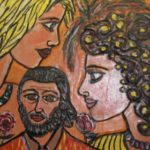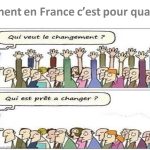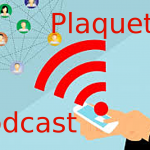Joëlle BASQUE,
Université de Montréal
Creative sense-making practices in
organizations with rigid sets of norms and predetermined shared meanings
Introduction
As we see more and more organizations performing global or local strategic reorientations, I wondered: “Is it possible to realize a reflexive process that is highly creative and developmental in organizations where members are constrained by rigid organizational norms, and share a strong core of values and truth claims”? Which practices foster creativity and exploration in collective sense-
making (Boyce, 1995, p.109)? Which practices tend to hinder creativity? This questioning, which is both theoretical and empirical, is what led to this explorative case study.
Organizational identification, sharing of interests and collective sense-making
In their 2006 article regarding boundary dynamics between self and organizational identity, Kreiner et al. state that some people
might feel a “craving for deeper meaning” that can be expressed by “a desire to affiliate with an organization that can complete
a sense of identity, vision, or purpose that may be missing from [their] life” (p.1329). Thus, organizational affiliation can be
conceived as a response to an inner yearning for a deeper sense of purpose in one’s life. This is particularly true with spiritual
and/or non-profits organizations, where the main objective of members is not financial, but is to serve others by providing help
and care for those in need, or in the case of churches to help people and communities grow spiritually and socially.
However, it is possible to see the need for identification as something other than an individual desire to embrace a bigger vision.
Indeed, Kenneth Burke states that such identification, which he calls consubstantiality, is fundamental to cooperation itself to
take place. Identity, for Burke, is a matter of sharing of substance, which emerges within acting together, in the performance
of acting towards a perceived shared interest. As Cheney states, consubstantiality is the product of an identification process
that leads the individual to adopt the perspective of the person he or she identifies with (1983b, p.146). Thus, identification, in
Burke’s thought, is sharing perspectives and goals through collective action. It is made in cooperation, hence Burke’s famous
quote: “Identification is compensatory to division” (1950, p.22). Organizational identification through sharing of common
interests and goals, then, is not only something that occurs to fulfill an individual’s desire to adhere to a greater purpose, it also
has a profound social function; it is fundamental to any cooperative endeavour, and is sustained by it.
Deliberately determining a main objective together is thus a way to create this sharing of interests among members of an
organization. In order to define and fix the motivations and objectives of the organization, members must join in what Boyce
calls “co-creative sense-making”. She describes it as “the process whereby groups interactively create social reality, which
becomes the organizational reality” (1995, p.109). Thus embracing a constructionist perspective, Boyce organized two
occasions for members of the non-profit spiritual organization she observed to meet and share stories about their experience
in the organization. Boyce first believed that creating occasions for co-creative sense-making would open the way for new
interpretations of organizational reality (1995, p. 109), she thought the participants’ stories would serve to develop a shared
purpose that would be new and somewhat creative. This is not what happened, because, the author explains, members telling
divergent stories were excluded, and stories of experiences that do not support the main point of view of the organization
were not told (1995, p.129). Furthermore, the core shared beliefs and norms of the organization were not seen as one that
could be changed based on the experiences of members. Consequently, the context did not favour co-creative sense-making,
and resulted in what Brown (2006) calls “a form of reflexivity that is self-confirmatory and self-satisfied” (p. 738). Moreover,
organization members do not see their organization as socially co-constructed, but unsurprisingly they take it for granted, as
well as their belief system and norms, as a source of motives and objectives. What about, then, churches and church conventions
that organize their own sense-making activities, that aim to draw from individuals’ experiences to “refocus” their churches?
Indeed, in the last twenty years or so, Christian churches have felt the need to redefine and re-orient themselves as groups and as
spiritual communities (Murray, 2004). Are those processes doomed to failure because of a strong set of norms and predetermined
beliefs? What can foster creative and developmental sensemaking practices and defining of objectives within organizations with
constraining norms and a strong shared belief system?
Sensemaking and creativity in action
In order to answer these questions we need to go further theoretically regarding sensemaking and creativity in action. First, let
us take seriously Burke’s stance that consubstantiality is acting together, which implies that the perception of shared interests
happens in action. This is congruent with Weick’s conceptualization of sensemaking as something that occurs in the day-to-day
reality of the organization, as an ongoing process of reducing equivocality while dealing with the “constant flow of experience”
(Weick et al., 2005, p.410). Sensemaking is thus a way to collectively deal with uncertainty (p.414) and literally produces the
organization, which is “talked into existence” through collective action (p.409). Hence, collective action gives rise to shared
meaning, or at least complementary meaning in terms of interests. Therefore, Weick’s definition of sensemaking has a high
heuristic value for understanding how daily interactions between members contribute to the definition of situations and shared
interest, and to the enactment of the environment that makes the organization. It allows us to see sensemaking as produced
Communiquer dans un monde de normes l 44
Creative sensemaking practices in
organizations with rigid sets of norms
and predetermined shared meanings Axe1
in action, whether it is in deciding what to do in quotidian situations in organizations, or in interacting in deliberate events of
re-orienting or refocusing. Whether the sensemaking is planned or not does not matter; it will happen when members of the
organization act together, as in Boyce’s study (1995), or with the refocusing process currently going on at my church and in my
church association.
As we are conceptualizing sensemaking as rooted in action, let us draw from a theory of action to see what can be the role of
creativity in it. Hans Joas, in his book The Creativity of Action (1996), provides an interesting stance on the matter. Contesting
traditional assumptions and theories stating that action is guided mainly by previously determined motivations23, Joas proposes
a conceptualization of action as being essentially creative rather that teleologically oriented. His model is not in total opposition
with the traditional models of rational action and normatively oriented action; it is a model that is presented as overarching
the two others (1996, p.4). His goal is to present the inherent creative aspect of all human action, a component of action not
adequately expressed in other models (Joas, 1996, p.4). In order to do so, he presents action as being guided by the situation
in which it takes place (which serves to determine practical goals and motivations), as well as by prereflexive dispositions of
the body (which is the the individual’s link with the concrete situation) (1996, p. 160). Joas explains that motivations are never
the cause of the act itself, but are one of its phases, meaning that motivations are established as the action unfolds, in relation
with the situation (p.162). The situation precedes the action, calls for it, but the goals and the situation are interdependent
from the beginning, in a quasi-dialogical manner (p.161). Also involved in this process is the body itself, which conditions the
possibilities of the action and is the interface of the individual’s relation with the situation. These prereflexive conditions of the
body guide the action, which in turn is the condition for the discovery of our values and needs, in a concrete situation (p.163).
This is where creativity lies; as we discover what we need and what we want in action, we become someone new and the world
acquires new significations for us (p.163). Thus, creativity is involved in action itself, as we set goals in the core of action,
discover our needs and actualize our values.
This way of conceiving creativity in action can also be found, although in different terms, in Eisenberg’s definition of “jamming”24
as an experience that foster closeness and improvization in coordinated action (1990, p.139). In fact, Eisenberg, citing Holquist
(1983), states that meaning is co-constructed in social interaction and has an intersubjective aspect (1990, p.141). Thus, in
order to avoid an individual bias to understanding of sensemaking, he proposes jamming as an experience of joint action that
encourages both cooperation and individuation (p.146), and as a good occasion for improvization and creativity to occur.
Jamming is presented as a way to “balance autonomy and interdependence in organizing” (p.139) and happens in specific
contexts of surrender and freedom. Relying on a set of basic rules and complementary skills, “each player sets up interesting
possibilities for the others and keeps the action going” (p.154). Creativity occurs through these new possibilities produced
in joint action, possibilities that cannot be previously expected or planned as such. As in Joas’ view, creativity in action is
conditioned and encouraged by the specificity of the situation, as well as by body dispositions of the players. Goals, values
and needs are determined in action. However, Eisenberg explains that in order for jamming to happen, a specific context is
needed, a context that can be more or less planned: “To facilitate jamming experiences, an organization must create a structure
for surrender, within which risk is rewarded, not punished, and work groups are kept sufficiently autonomous to ensure the
development and survival of novel ideas” (1990, p.158).
Finally, creativity, in scientific literature, is often a term that is taken for granted, as the main occupation of a specific type of
workers: “creative workers” (Gotsi et al., 2010; Elsbach, 2009). Creativity has also been used as an indicator of an organization’s
effectiveness and productivity (Crosby, 1972; Dauw, 1971). Creativity being a hard term to conceptualize (Sawyer, 2006), I will
rely, for the purposes of this paper, on definitions derived from Joas and Eisenberg, with some reference to organizational and
management studies. Neither Joas nor Eisenberg defines the concept of creativity, but in their thinking, creativity refers to the
discovery of new inclinations and the performance of new actions (by improvizing). Similarly, creativity in organizational studies
often refers to “something new”, meaning new ideas or actions, not driven or informed by, and not taken from, past experiences (see
for instance Heath, 2007, p.154, 157). Creativity can also refer to imagining new contexts or domains of application for successful
ideas (Hargadon and Sutton, 2000, cited by Ford, 2002, p. 643), or basically the art of making new combinations (Hafaele (1962),
Aznar (1971), Kneller (1965) cited by de Schietère, 1977).
The theoretical implications we can draw upon for our analysis are that creativity, understood as having new ideas or making new combinations of ideas related to values, need and interests, is both the product of and the condition for collective action, and thus sensemaking. Favourable context or situation is crucial to foster greater improvization and creative sensemaking. I therefore propose the following research question: “Which features of the situation, in terms of experiences and performance, can foster creativity in sensemaking exercises?”
Methodology
To conduct this case study, I used three methods of data gathering. First, as I was currently involved in the refocusing process
occurring at my church, I started to take notes on my previous experiences with the process, as well as during the last sessions
I attended as a participant. I thus used a participant observer method as a first means of collecting data from the field. I was an
active observer, as I participated in the process of refocusing. Second, I collected documents from the field, such as notebooks
from participants, and documentation about the process itself. Third, I conducted an interview with the process’s moderator, who
is not a member of the church but is a pastor from another congregation of the same church association. The aim of this interview
23 As stated in the rational model of action, abundantly developed by Talcott Parsons, The Structure of Social Action (1937)
24 Eisenberg borrows the term from music and sports, and describes it as “instances of fluid behavioural coordination that occur without detailed knowledge of personality” (1990, p.139).
Communiquer dans un monde de normes l 45
Creative sensemaking practices in
organizations with rigid sets of norms
and predetermined shared meanings
was to gain insight on the rationale for the way he conducted the process. This method of data collecting allowed me not only to observe the group dynamic and the moderator’s situated practices on the field, but also to comprehend how the moderator understood his role as such and what his goals were in the process.
Moreover, as a participant observer I contributed to the unfolding of events during the process. With this high degree of participation, the researcher’s subjectivity is fully tainted by the experience. However, being a full participant in the process allows a better intimacy with the context and a close understanding of unfolding events. Already knowing the people involved in the process allowed me to have a comprehensive interpretation of discourse and action, as I had a previous and in-depth knowledge of the group and its dynamics.
Description of the process
The “refocusing process” used in the church I studied is something that can be considered as a tool to fulfill their need for
re-orienting. The process has been followed by many churches from this specific convention for 15 to 20 years now. The
moderator defines it as “strategic planning adapted for churches”. While the process can be applied to groups of various sizes,
it is always subdivided with subgroups of six individuals. Each individual has a guiding notebook that contains instructions as
well as spaces for writing (taking notes and doing the exercises). The moderator leads the sessions, with the help of several
coaches, one of whom is assigned to each subgroup. The process consists of two main phases. The first one is dedicated to the
refocusing of individuals, the second to the refocusing of the group. Each phase consists of three or four events, where people
gather together to do exercises and exchange ideas. The first phase consists of exercises whereby participants build their life
stories by identifying and ordering major events, persons and circumstances. Further exercises serve to analyse the life stories
thus constructed and redefine the participants’ personal values, goals, life objectives and the concrete means to achieve them.
Similar steps are used for the second phase, during which the church as a collective is the focus. The data for this paper is drawn
from the first phase of the process.
Analysis
I identified three features of the refocusing process as it occurred in the case I observed that seem to have fostered creative and developmental sensemaking. These three features are: 1) the enactment of the process itself (how the guidelines were applied by the moderator and coaches, and how the participants responded); 2) the multiplicity and diversity of symbolic resources available to the participants; 3) the group dynamic (marked by productive minority dissent.).
1) Enactment of the process
The refocusing process is well structured and organized. Participants have steps to follow, questions to answer, and the moderator
makes sure that everything goes according to the plan. At the same time, the process allows for some flexibility in its application,
and gives a wide liberty for participants to fill in with what they want. In other words, participants are invited to answer open
questions, without any explicit expectations in terms of what they can or should answer. For instance, the first step of the process
is to put together the life story of the participants, in a conceptual and textual form. Participants identify persons, events, and
circumstances that they feel have marked their lives. Participants are free to change elements of the process if they do not feel
these elements are suitable or useful to them. For instance, one could choose to identify only life circumstances, arguing that
“persons” and “events” are included within them.
Participants are also not pressured to include a pre-conceived turning point one could expect from a Christian perspective, such
as “conversion”. Participants are free to put anything they want in their notebooks. They can also choose what or how much
they want to share with others. The process is thus proposing a coherent set of steps to follow, but is flexible in terms of content
and enactment. People can make counter-suggestions, in response to which the moderator will sometimes adjust the process
according to what the participants want. This is consistent with some of the features that Eisenberg identifies as important in
situations that encourage jamming and novelty: letting go of control, and autonomy of the participants (1990, p.158).
At the beginning of the process, the moderator brought many nuances to his explication of the steps to follow, and gave a lot
of latitude to participants. Participants were not constrained to following the process with precision. The moderator clearly
explained that participants could choose to use whatever they felt would be helpful and useful for themselves. Also, during the
interview, I learned that he considers his role as being one of a “facilitator”, as prescribed by the process, instead of a moderator.
He insists on the use of the word “facilitator”, and describes it as: “the one who creates the best context for people to make their
own discoveries. Thus, the facilitator does not tell people what they should do, what should be the content or how they should
answer the questions, but it is the person who will create a favourable environment where people can exchange and, through
performing exercises, make their own discoveries on their own”. Interestingly, this idea of helping people make their own
discoveries recalls Joas’ take on creativity in action, where people make discoveries regarding motivations, needs and interests.
We can also see that this is consistent with Eisenberg’s idea of creating favourable contexts for jamming.
Nevertheless, I observed that the facilitator sometimes intervened in ways that hinder creative ideas or novelty by orienting the
content of the participants’ answers For instance, he often gave several examples, sometimes even taken from his personal life.
When the time came to write down one’s own “purpose statement”, all the examples given, though varying in length and in
|
Communiquer dans un monde de normes |
|
l |
|
46 |
Creative sensemaking practices in
organizations with rigid sets of norms
and predetermined shared meanings Axe1
vocabulary, could be reduced to two simple elements: “to love God and to love others”. Consequently, a great numbers of the
participants’ stated reasons for living contained these two elements. Let us note, however, that these two elements are congruent
with the two first commandments of the Bible, an important interpretative repertoire (Smith & Windes, 1997) for Christians.
They are resumed in Luke 10:27 (NIV, 2010): “‘Love the Lord your God with all your heart and with all your soul and with
all your strength and with all your mind’; and, ‘Love your neighbour as yourself.’”. Here, the examples given by the facilitator
reinforced the influence of the Christian norm and oriented the content of the participants’ purpose statements. This practice
thus favours conformity among participants, though counterbalanced by the inherent creativity of action, which led to variations
on the same theme, or led some people to discover that they either shared these life purposes (to love God and to love others)
or didn’t. In some cases, even if they did share these life purposes, people would not frame their purpose statements to include
these elements. For instance, let’s see this participant’s purpose statement, who chose not to include these two elements: “I exist
to live the best life I can live, according to who I am with my own strengths and weaknesses; to be happy by doing what I can to
contribute to the happiness of those around me”.
Nevertheless, and even if some participants did not reproduce the examples previously given, I found that giving examples would
often lead a majority of participants to answer in a particular way, and can thus lead collective sensemaking to more conformity
and less creativity, development and novelty. This was especially salient with the “purpose statement” example. Nonetheless,
the influence of examples toward conformity can be counterbalanced by the inherent creativity of action, as well as letting go
of control from the moderator, and some other features of the process that we will see in the two next sections of this analysis.
2) The multiplicity and diversity of symbolic resources available to participants
I observed that something that fostered creativity in the refocusing process was the previous access of participants to various symbolic resources. As the facilitator noted, people who had traveled around the world, or who were well informed about the various church’s practices in the world, had a tendency to be more creative in their propositions regarding “being a Christian” and “doing church”. Creativity here lies in the recycling of ideas to apply to one’s own context. Therefore, a wider variety of resources leads to greater creative possibilities for sensemaking. Thus, facilitating access to a wider variety of symbolic resources is a way to foster greater creativity in interpreting one’s situation and potentialities. People will seek new possibilities for themselves and for their church if they know many other ways of acting are used in other countries and regions. The facilitator also added that doing the exercises in groups is a way to encourage the sharing of this kind of knowledge and of new ideas among participants, which is consistent with the social aspect of sensemaking and action in Weick’s perspective (1995).
Also, evangelical Christians in the province of Quebec being in a minority situation, their cultural references are not limited
to an evangelical culture. We could see a manifestation of this during the session concerning the spiritual temperaments25. In
this session, the facilitator described a wide variety of spiritual temperaments, to show that devotion is not limited to our usual
preconceived notions of it, such as reciting prayers, reading the Bible or singing praises with the assembly at church. Nine
types of spiritual temperaments were describe to show the participants that there are many ways to adore or praise the Lord,
such as serving others, engaging in activists work, stimulating one’s intellect by reading and learning about God, contemplating
nature, etc. At one point, one of the participants shared one of his own ways of praising the Lord. He named it the “epicurean
way”, saying that for him, to savour a good wine and a perfect meal with friends or family was a moment when he felt closer to
God. Needless to say, this Ancient Greek tradition and way of life oriented toward pleasure is not traditionally congruent with
Christian norms regarding lifestyle, which is often characterized by frugality and simplicity (in the Catholic tradition especially)
or with restraint toward alcohol in general, but for it to be recuperated as a Christian way of praising God shows the diversity of
cultural traditions mobilized by this participant in the sensemaking process26. This allowed him to make new combinations of
values, thus demonstrating creativity in sensemaking.
3) Group dynamic
The third feature that had great incidence on the reflexive process leading to creativity and development instead of re-affirmation
was the group dynamic. In fact, the group dynamic I observed during the sessions was along the lines of what I would call
“productive minority dissent”. Although at the beginning of the process people followed the steps with diligence and conformity,
the further we got along the process, the more people seemed to feel free to express their disagreement with some aspects of it,
or to propose alternatives. For instance, when the examples of “purpose statement” were presented, a young woman exclaimed:
“Can’t we be more creative than that?!”, pointing out that all the examples provided contained more or less the same ideas.
The facilitator answered yes, and everyone went on with the exercises. One of the participants decided to be more creative, as
proposed by the young woman, and instead of writing a sentence, drew a wine amphora. She said it had a round form, “just like
her”, and that it represented her being crafted by the Lord, as in the verse in Isaiah 64:8 “Yet you, Lord, are our Father. We are
the clay, you are the potter; we are all the work of your hand” (NIV, 2010). She also said it represented her being someone who
is happy and joyful in her day-to-day life. We find here again the wine metaphor (but from a different participant) to describe
the relationship with God, and we see someone using pictorial representation instead of words to complete an exercise of the
process. The plea for creativity made by the young woman opened up new possibilities and combinations, both for herself and
25 “Spirital temperament” can be understood as the way one sustains and nourishes one’s relationship with God.
26 We can also see here a trait of Quebec’s French culture, differing from an English tradition on that specific matter (the crucial important of wine and good food in social life).
|
Communiquer dans un monde de normes |
|
l |
|
47 |
Creative sensemaking practices in
organizations with rigid sets of norms
and predetermined shared meanings
for the other participants. Among them, this woman decided to be creative and to use drawing to define her “purpose statement”,
yet drawing inspiration from a Bible verse to do so. She thus uses a common Christian interpretative repertoire, or package
(Smith & Windes, 1997), to get inspired, but also to legitimize her “deviation” from the instructions. The use of the Bible as a
symbolic resource shows the strong influence of the rigid core of shared beliefs and norms, but the innovation lies in the new
combination made by the participant (using the amphora as a purpose statement) and, even more so, in the deviation from the
process’s instructions (using a pictorial representation instead of words). This is different from the other participant we showed
earlier (in section 1 of the analysis), who, refusing to conform, didn’t draw from the Bible at all to write her purpose statement,
but instead referred to her own situation and personality. That participant says she was also inspired by the plea for creativity
made by the young woman, and in writing her purpose statement in such a way, she re-actualized her own needs, values and
motivations (Joas, 1996).
I call this dynamic “productive minority dissent”, drawing on Smith and Mackie’s (2000) interpretation of Moscovici’s famous
study on the influence of minorities on majorities (pp. 365-366). According to these authors, Moscovici asserted that minorities
can manage their dissent effectively as a way of gaining interest from the majority (2000, p.365). Smith and Mackie state that,
according to Moscovici: “when minorities manage their dissent effectively, other group members are more likely to systematically
process their argument. […] Their plausible alternative creates uncertainty about reality and this stimulates thinking among
majority members” (Smith and Mackie, 2000, p.365-366). Something similar could be observed more and more as the first phase
of the process took place. Members gradually began expressing their concerns and thoughts about the process and its content,
which fostered productive reflections and thinking among the group, leading to more creative sensemaking. Let us note, however,
that this context did not lead to reformative or completely new sensemaking. Often we could see the participants follow the steps
proposed by the refocusing process. Even the woman with the wine amphora picturing her purpose statement finally wrote a
sentence to fit in with the group. The creativity here observed is more subtle, as in Joas’ take on inherent creativity of action,
where action itself is the loci of new possibilities and discoveries to take place, and for the relation of the individual with the
world to evolve.
Conclusion
My analysis of a sensemaking exercise conducted at my church during the fall of 2010 showed that three elements of context
could influence collective sensemaking positively, in terms of creativity and development. The first one was the way the reflexive
process was enacted by the moderator and his colleagues as well as by the participants. In this case, the refocusing process has
been flexible in terms of content and the following of directives. The moderator tried to limit to a minimum his control over
the participants, and instead to encourage them to complete the exercises with their own thoughts and discoveries. Although he
provided many examples that, as we observed, could hinder creativity, he tried to counterbalance this negative effect, which he
considers important in relation to other matters, such as openness and liberty of sharing. The second contextual element that had
a positive effect on creativity was access to multiplicity and diversity of symbolic resources to nourish reflections. This allowed
participants to discover new possibilities and make new combinations of ideas to enact the environment. Finally, the third
element that fostered creativity was the group dynamic, marked by what I called productive minority dissent. People seemed to
feel free to express doubts and concerns about the process itself and its content, and at times a minority would lead the majority
into creative and developmental thinking.
This explorative study has shown that there can be a certain amount of creativity in reflexive exercises conducted by organizations with rigid sets of norms and predetermined shared meaning. Indeed, because of the inherent creativity related to action and sensemaking, these sets of norms and shared meaning are constantly the subject of actualization, and specific practices and enactment can foster more creative and developmental actualization.
Introduction
Managing the future development of tourism destinations is increasingly complex. Whereas
many scholars have addressed these issues in the past (Hall, 2000; Dredge et al., 2011),
times are changing. New, alternative organizational structures and models for destination
management and governance are emerging, as is discussed in this trends paper based on
a set of observation made in The Netherlands. Forces driving change include the overall
growth of the tourism industry, competition is increasing, visitors become experienced and
more demanding, the negative impacts of tourism are openly debated and solutions to
manage emerging issues involve the actions and capacities of many (and new)
stakeholders, across different (policy) domains and governance levels (Peeters et al., 2018;
Hartman, 2016). Clearly, a focus exclusively on destination marketing is insufficient and
destination marketing organizations and national tourism organization (NTOs) shift their
focus en masse from marketing to management. By doing so, they explicitly or implicitly
acknowledge that the context wherein tourism and destination development take place has
changed or is in the process of changing. To achieve goals, they will sooner or later
encounter an interdependence on other actors and a need to build or become part of
productive actor networks. As such, new fitting organizational models and governance
approaches are needed and are actively sought. This trend can be observed in tourism
Stefan Hartman is based at
the European Tourism
Futures Institute (ETFI), NHL
Stenden University of
Applied Sciences,
Leeuwarden, The
Netherlands, and Cultural
Geography, Rijksuniversiteit
Groningen Faculteit
Ruimtelijke Wetenschappen,
Groningen,
The Netherlands.
Ben Wielenga and
Jasper Hessel Heslinga are
both based at the European
Tourism Futures Institute
(ETFI), NHL Stenden
University of Applied
Sciences, Leeuwarden,
The Netherlands.
Received 1 November 2019
Revised 20 November 2019
Accepted 20 November 2019
© Stefan Hartman, Ben Wielenga
and Jasper Hessel Heslinga.
Published in Journal of Tourism
Futures. Published by Emerald
Publishing Limited. This article is
published under the Creative
Commons Attribution (CC BY 4.0)
licence. Anyone may reproduce,
distribute, translate and create
derivative works of this article (for
both commercial and noncommercial purposes), subject to
full attribution to the original
publication and authors. The full
terms of this licence may be seen
athttp://creativecommons.org/
licences/by/4.0/legalcode
DOI 10.1108/JTF-11-2019-0123 Emerald Publishing Limited, ISSN 2055-5911 j JOURNAL OF TOURISM FUTURES j
practice in The Netherlands, as discussed later in this paper, and is reshaping the future of
tourism destination development and management. In literature, we expect future
contributions that further theorize and conceptualize these developments, building on this
trend paper. Exploring the trend of (the practice of and/or the ambition of) building
productive coalitions is important, as it sheds light on how actors seek interaction,
connectivity and alignment of their actions, and define key roles and responsibilities in the
process. This paper outlines five observations that stress the trend of new governance
approaches and emerging organizational models in tourism destination development and
management in The Netherlands.
Trend observations
Observation 1: The discourse on tourism development is transitioning from a goaloriented focus on growth of jobs, income and tourist numbers to an orientation that
focuses on tourism as a means for placemaking and well-being. In other words, to put
value over volume (McKinsey and Company and World Travel and Tourism Council,
2017). This widens the scope of discussions on tourism development as it requires
embracing a multi-goal, multi-domain, multi-actor and multi-level approach (Hartman,
2018a). Whether actors are driven by emerging opportunities, by solving urgencies or by
managing the complexities of a progressing tourism industry, the interrelations and
interdependencies of actors and their actions become more and more apparent. As a
result, actors are driven together as they depend on each other to reach individual as
well as collective goals.
Observation 2: Tourism destinations are conceptualized as cohesive “systems”. They are
conceptualized as consisting of interrelated products, sectors and institutions and
elements, agents and their actions are tied very closely to other elements, agents and
their actions (Ma and Hassink, 2013; Brouder and Eriksson, 2013; Hartman, 2018b). For
instance, islands or cities that are developed, managed, branded and promoted as a
tourist destination and perceived as such by consuConceptualizing destinations by
means of theories of complex systems helps to better understand how global drivers of
change impact on tourism destinations, often in a largely autonomous way, and how
this triggers in-system adaptive responses by a variety of actors. As actors and their
actions are interrelated and affect each other, their (self-organized) collective behavior
steers and shapes how tourism destinations develop and evolve over time. Collective
actions are key to the outcomes of destination development processes.
Observation 3: At the micro level of destinations, we observe the emergence of
sophisticated actor networks (Jørgensen, 2017) that operate as productive coalitions
aiming to address the challenges they face as being part of the same system, i.e.
tourism destination. In The Netherlands, we see actor networks emerging such as the
Toerisme Alliantie Fryslaˆn (tourism alliance Fryslaˆn) in the province of Friesland, Drenthe
Leisure Valley in the province of Drenthe, Toerisme Coo¨peratie Groningen (tourism
cooperation Groningen) in the province of Groningen, Toeristische Uitvoeringsalliantie
(tourism implementation alliance) in the province of Zeeland and Gastvrij Overijssel
(hospitable Overijssel) in the province of Overijssel. Those networks consist of a
combination of actors such as entrepreneurs, branch organizations, governments,
nature associations, park management organizations, social movement organizations,
educational institutions and research institutes. The involved actors seek collaboration
to join forces and capacities for a range of topics such as, among other things, for
creating tourism products and experience design, accelerate innovations, engage in
lobby activities, stimulate collective learning, business innovation and placemaking.
Practically, activities are organized by key players within those networks that stimulate
actors to engage in what we can describe as visioning and strategic storytelling
(Hartman et al., 2019). Moreover, it allows collectives to emphasize shared urgencies
j JOURNAL OF TOURISM FUTURES j
and opportunities and reinforce the importance of mobilizing capacities and building
productive coalitions.
Observation 4: Process-wise, the emergence of these actor networks, albeit
conceptually, seem to follow more or less a same type of logic. They tend to go through
various phases. Rooted in the tradition of marketing, promotion and branding activities
(phase 1: marketing), collectives are formed to proactively engage in strategy
development, tourism product and experience design (phase 2: management) to
stimulate innovation, reinforce competitive positions, aiming to manage and influence
visitor flows away from hotspots and toward underutilized sites. However, being still
largely within the domain of tourism and often with a focus on economic growth and
increasing volumes. The next stage, shown for instance by the network of Gastvrij
Overijssel, revolves around destination development taking into account the wider
socio-economic and cultural impacts of tourism development on host-communities.
Here, the focus is on value creation by tourism and developing an understanding of
how tourism can be a means for wider societal goals. A next stage that is yet to present
itself is that tourism is not treated as a separate industry, sector or policy domain. In this
future state, tourism is an integral part of strategic and inclusive spatial planning and
placemaking, aimed at creating good places to live and good places to visit. Generally,
shifting from one stage to another takes time (e.g. multiple years) and depends on a set
of proactive individuals that are successful boundary spanners in terms of linking
multiple (policy) domains, multiple types of actors and their interest (e.g. entrepreneurs
versus governments versus nature organizations) across multiple governmental and
spatial scales.
Observation 5: Content-wise, these actor networks, albeit conceptually, seem to follow
more or less a same type of logic. Actor networks become productive coalitions when
actors are working together in a strategic, organized and complementary manner based
on a (more or less) division of tasks, roles and responsibilities within the coalition. We
observe the emergence of a recurring organizational structure, that might show contours
of new models for destination management and governance – an expect to explore
further in a full research paper. Figure 2 outlines the main recurring activities according
Figure 1 Steps in the evolution of actor-networks
j JOURNAL OF TOURISM FUTURES j
to the observations of the authors (CELTH, 2019). The overview is based on the product
life cycle and is inspired by the organizational structure of the Toeristische
Uitvoeringsalliantie Zeeland. Programming (Step 1) is necessary to get the other steps
going. It consists of storytelling, visioning, strategic planning, implementation planning
and ensuring (financial and organizational) continuity. Generally a task that is taken up
by or informally assigned to governmental authorities. This enables authorities to directly
streamline objective and approached to tourism in governments’ overall policy
objectives as well as more indirectly enable other actors to contribute and possible over
time also influence these policy objectives. Data & Info (Step 2) emerges as a result of
ambitions to make data-driven decisions, a task that fits well with knowledge institutions,
public authorities that commission monitoring programs and private parties for
implementations. Experiment & innovation (Step 3) concerns the importance to adjust
and adapt to the changing market conditions and consumer demands. This role fits well
with frontrunners from the industry and supported by governmental funds,
entrepreneurial investment schemes, start-up incubators and economic boards.
Implement & Upscale (Step 4) is the wider implementation of successful experiments
and pilots by industry partners such as (policy) entrepreneurs in the tourism, leisure,
hospitality, event sectors but also from the sector of cultural (e.g. museums) and nature
(e.g. park management). Branding & Marketing (Step 5) is about establishing links
between supply and demand, to motivate visitors to travel to the destination. This task is
generally the responsibility of marketing organizations, tourist information organizations
as well as individual businesses themselves. Evaluate & Learn (Step 6) is the process of
checking whether actions have led to desired results. This step involves ex-post and ex
ante evaluations that might be performed by governmental audit committees,
independent research institutions, but also (research) journalist. These evaluations
Figure 2 Overview of activities within actor-networks
j JOURNAL OF TOURISM FUTURES j
gather input to evaluate results, adapt goals and ambitions and reshape the processes
to realize the goals and ambitions.
Conclusions and discussion
Based on our observations, we draw the conclusion that emerging actor networks fit very
well within the current time frame, being dominated by debates amongst others on
overtourism and value over volume. Regarding the future of tourism destination
development, we estimate that establishing productive actor networks will gain importance
and will emerge more and more on the political and policy agendas. Challenges for the
future are multiple. In practice, an ambition to build actor networks may face endless
barriers in terms of urgency, opportunity, capacity, motivation and leadership. As
productive actor networks depend on individual actors and their actions, they cannot be
“manufactured” and need to emerge and evolve, and subtly stimulated and supported.
Learning from and linking with other initiatives in other destinations would be helpful, over
time offering the possibility to give rise to an ecosystem that spans various destinations, at
different spatial scales and governance levels. For academia, a future challenge would be
to contribute to a better understanding of the key conditions for the emergence and
development of productive actor networks, e.g. via case study research.
Funding
This paper is part of the research project Building Adaptive Tourism Areas, funded by the
Taskforce for Applied Research (in Dutch: Nationaal Regieorgaan Praktijkgeric
















